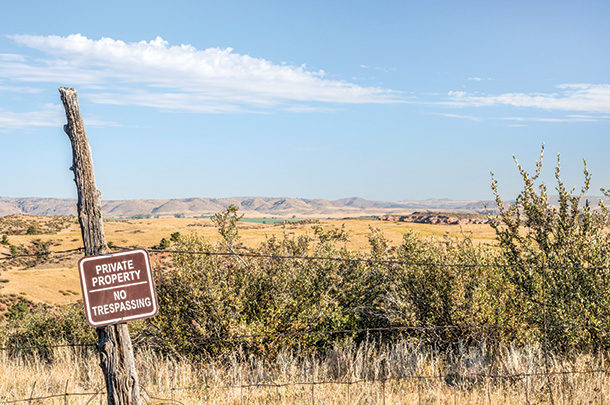The U.S. Supreme Court recently ruled in Cedar Point Nursery v. Hassid, a case involving a California farm. While the case certainly upholds private property rights, the practical reach of this decision for other agricultural businesses will remain to be seen.
California law gives agricultural employees the right to self-organization and prohibits employers from interfering with that right. The California Agricultural Labor Relations Board (CALRB) passed a regulation that requires labor organizations to have the right to access an agricultural employer’s property to meet and talk with employees and to seek their support for unionization.
Under this regulation, agricultural employers must allow union organizers access to their property for up to three hours per day, 120 days per year. An employer who interferes with this right of access may be guilty of an unfair labor practice, resulting in sanctions. Two California fruit growers filed suit challenging the legality of this statute, claiming that it constituted a regulatory taking of private property without just compensation.
In a 6-3 decision written by Chief Justice Roberts, the U.S. Supreme Court agreed. The majority held “the access regulation appropriates a right to invade the growers’ property and therefore constitutes a per se physical taking.” Rather than restraining the growers’ use of their property, the regulation appropriates the owners’ right to exclude for the enjoyment of third parties.
This right to exclude is a cornerstone of private property rights. The right to exclude falls within the interests the government cannot take without paying just compensation. Here, the regulation allows the union organizers to physically invade the growers’ properties, thereby resulting in a per se physical taking for which just compensation is required.
This was true despite the regulation not allowing continuous and permanent access to the union organizers. The court reasoned, “the fact that a right to take access is exercised only from time to time does not make it any less a physical taking.”
The dissenting opinion, authored by Justice Breyer, raised several concerns, including the broad potential impact this could have on other statutes allowing the government access to private property for everything from health and safety inspections to law enforcement searches. The majority opinion noted that this holding was limited to these specific facts.
In particular, the court articulated three important limitations.
First, this holding does not change the distinction between trespass and takings. “Isolated physical invasions, not undertaken pursuant to a granted right of access, are properly assessed as individual torts rather than appropriations of property.”
Second, many government-authorized physical invasions do not constitute a taking because they are consistent with “longstanding background restrictions on property rights.” For example, it is not a taking for the government to require a landowner to abate a nuisance because he had no right to engage in a nuisance in the first place. Similarly, a taking would not occur if entrance were allowed for public or private necessity or to effect an arrest or enforce criminal law under certain circumstances.
Third, a taking would not occur if the government required property owners to concede a right of access as a condition of obtaining a certain benefit. Thus, government health and safety inspection regimes would generally not constitute a taking. If the government conditions a grant of a permit, license or regulation on allowing access for reasonable health and safety inspections, a taking likely would not occur.
In summary, “None of these considerations undermine our determination that the access regulation here gives rise to a per se physical taking. Unlike a mere trespass, the regulation grants a formal entitlement to physically invade the growers’ land. Unlike a law enforcement search, no traditional background principle of property law requires the growers to admit union organizers onto their premises. And unlike standard health and safety inspections, the access regulation is not germane to any benefit provided to agricultural employers or any risk posed to the public. The access regulation amounts to a simple appropriation of private property.”
So, the real question is, what impact will this decision have on cattle producers across the U.S.? I think that is an unanswered question and will depend on how lower federal courts apply this decision to future challenges. Certainly, for ranchers in California who were subject to this particular regulation, the ruling has practical effect. Moreover, this decision provides strong support for the importance of private property rights, of which the right to exclude is certainly included.
However, given the limitations noted by the court, and the uncertain nature of how those will be applied, it is difficult to predict exactly how far-reaching this case will be for those involved in cattle production.









